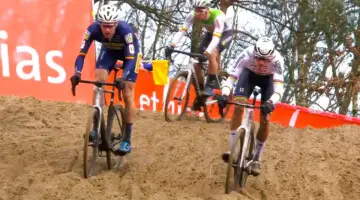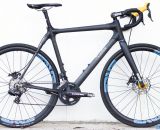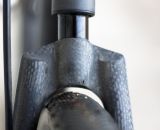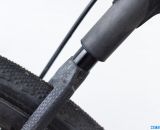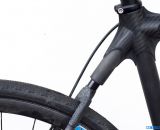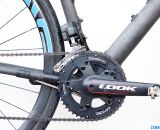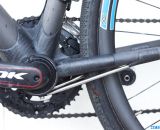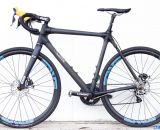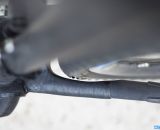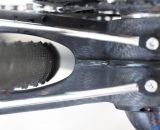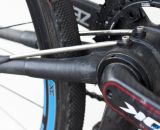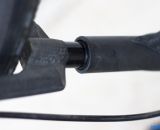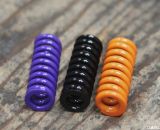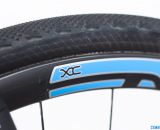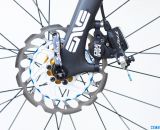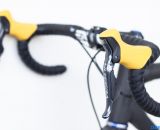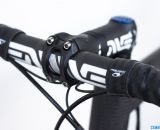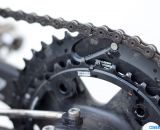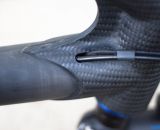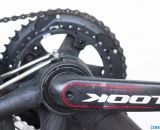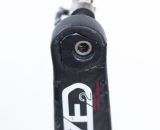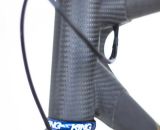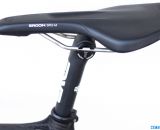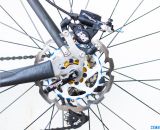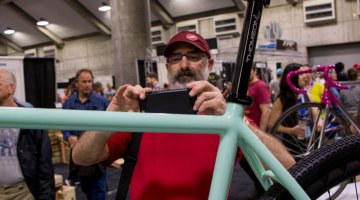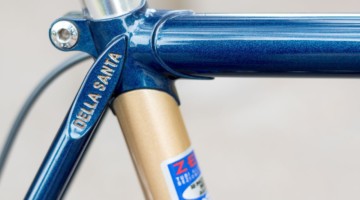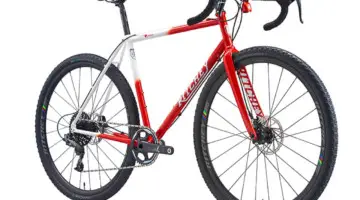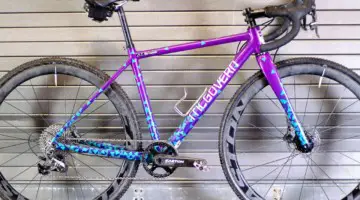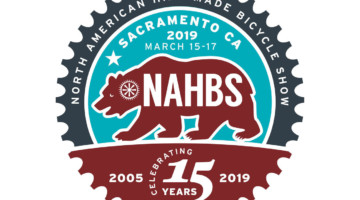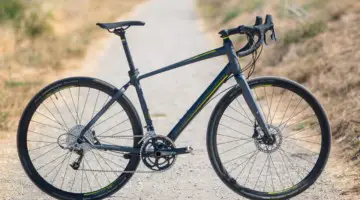Cyclocross Magazine got a rare opportunity to not only get an early, exclusive preview of a NAHBS 2014 show bike, but to also spend a few weeks testing the handmade machine on our favorite trails and cyclocross courses. The bike? Calfee Design’s Manta CX softail prototype.
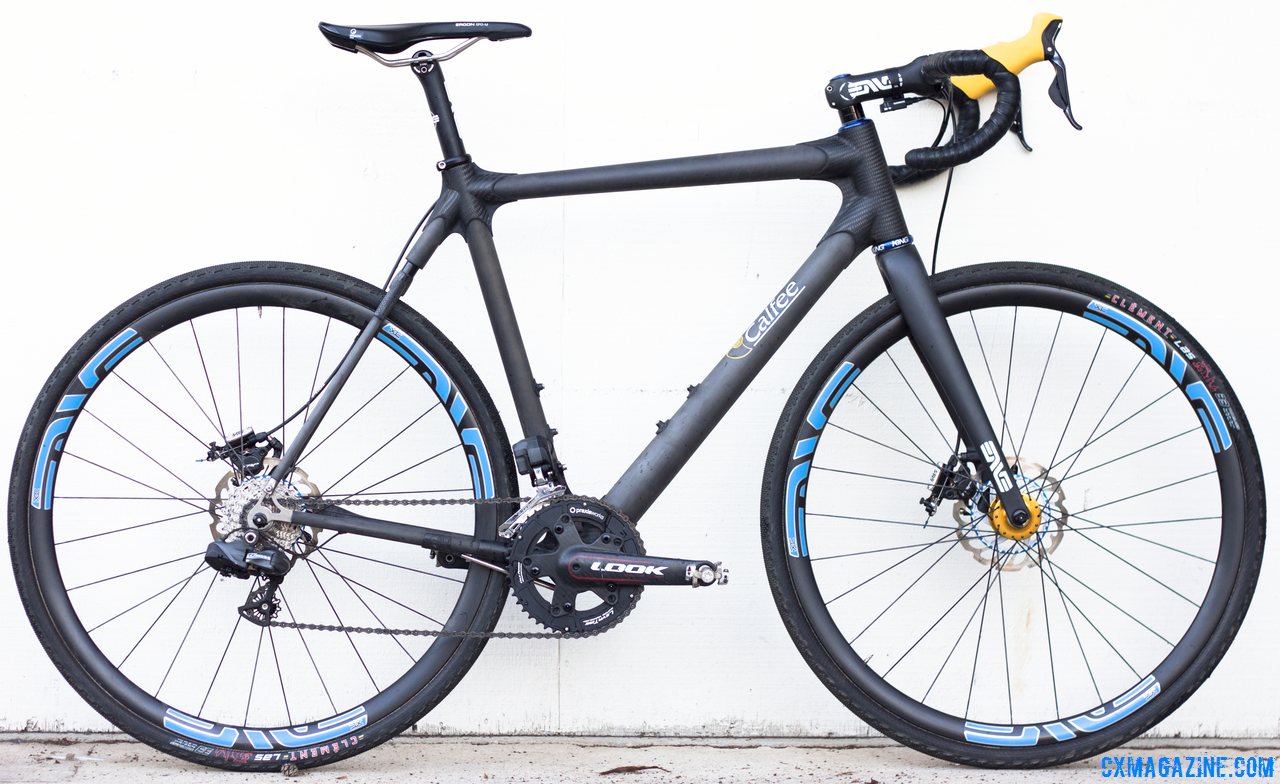
Calfee Design’s Manta CX Prototype as ridden by CXM, and to be shown at NAHBS. © Cyclocross Magazine
Softails are nothing new, and companies like ProFlex and Moots (with the YBB) have long offered versions of the softail. Moots even offers a YBB version of its titanium Psychlo-X cyclocross bike, with 1.125″ of pivotless metal sprung travel. Calfee is approaching the softail design with a slightly different motivation (at least on the road), and hopes to increase traction and reduce fatigue on skinny tire bikes.
At the Outdoor Demo at Interbike 2013, we brought you plenty of photos and details of the Calfee Design Manta softail road bike, and revealed how a cyclocross version was in the works. Since September, Craig Calfee and Michael Moore have been hard at work building and testing versions of the Manta, and have made some further changes to the design we saw back in Vegas. The elastomer bumper is gone, and in its place is a metal spring to provide a more active, responsive suspension. Travel with the metal spring is 1.2″, very close to that of the Moots YBB, and sag is set to about a third of the travel.
Calfee now has five different springs of increasing stiffness, and after additional testing, is extremely happy with the design and ride of the metal springs. The company is already taking orders now for Manta road bikes and has just started to ship them. Several Manta builds will be on display at NAHBS 2014 in North Carolina, including the bike that we’ve been riding, seen here.
With the road version of the Manta pretty much complete, Calfee now has its sights on the cyclocross, gravel and adventure category, and assembled this Manta CX prototype for testing. While this prototype currently uses Calfee’s standard Manta seatstay wishbone, resulting in minimal tire clearance, it’s built around disc brakes, an ENVE CX disc fork with tapered steerer, and cyclocross geometry.
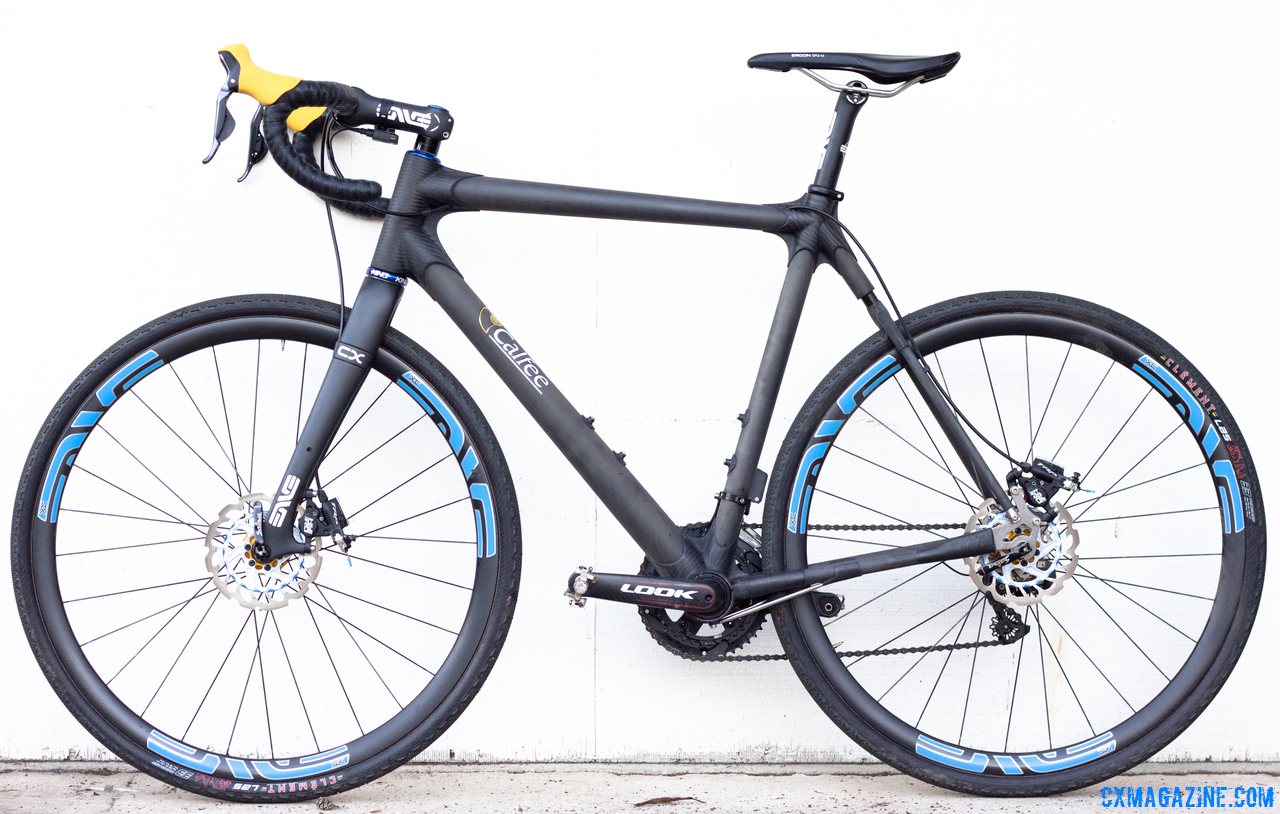
Calfee Design’s Manta CX Prototype as ridden by CXM, and to be shown at NAHBS. Like any show bike, it’s expensive, and limited in production but orders are being taken now. © Cyclocross Magazine
We had a chance to spend two weeks to review and ride this exact NAHBS 2014 show bike, and came away very impressed while riding our usual mixed terrain routes in dry conditions. The suspension, set on a medium spring (for our two 155 and 170-pound testers), was plenty active on bumpy terrain, absorbing quite a bit of the sting of washboard gravel roads and hard pack trails. An unexpected benefit we noticed was improved traction and control in bumpy corners. The rear tire just felt glued to the ground, and off-road descents and turns were easy to take at higher speeds.
On the road, you could still feel the spring at work, absorbing pavement imperfections and reacting a bit to pedal input. A smooth, high cadence pedal stroke helps avoid any pedal bob, as would a stiffer spring (we used #3 of 5), but after a few minutes, it was easy to forget you were riding something different from a rigid road or cyclocross bike—until you realized you weren’t feeling every single bump and were descending a little faster than normal.
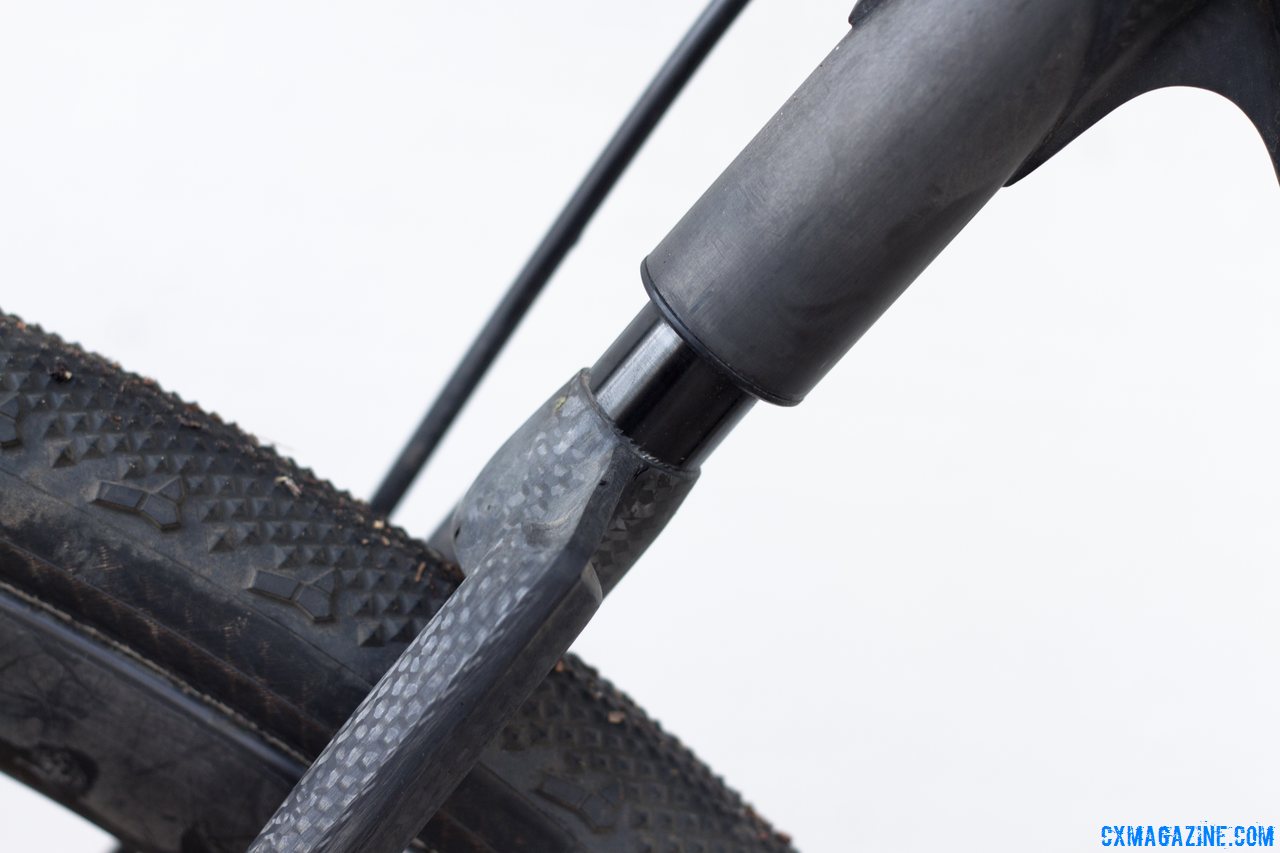
This Calfee Manta CX Prototype has 1.2cm of travel. Tight tire clearance, but a taller, wider wishbone will add mud clearance. © Cyclocross Magazine
We received some rain during our test period, and as Calfee’s Moore warned us, this Manta CX prototype is not a mudder (yet) due to tire clearance issues. This was verified as soon as we hit some thick mud, and we quickly were off looking for the nearest stick to clear out some clogged mud at the seatstays and down by the chainstays.
Calfee says adding mud clearance to the seatstay area will be easy with a wider and taller wishbone on the production cyclocross models, but adding clearance down by the chainstays may prove more challenging. It’s the one important modification that will be needed if the Manta CX will be an all-conditions cyclocross or gravel adventure bike, since both disciplines are often held during inclement weather throughout much of the country. Calfee has prioritized smaller diameter, thicker wall chainstays for impact resistance, and you can be sure the company’s experience in doing carbon frame repairs has weighed in on that decision.
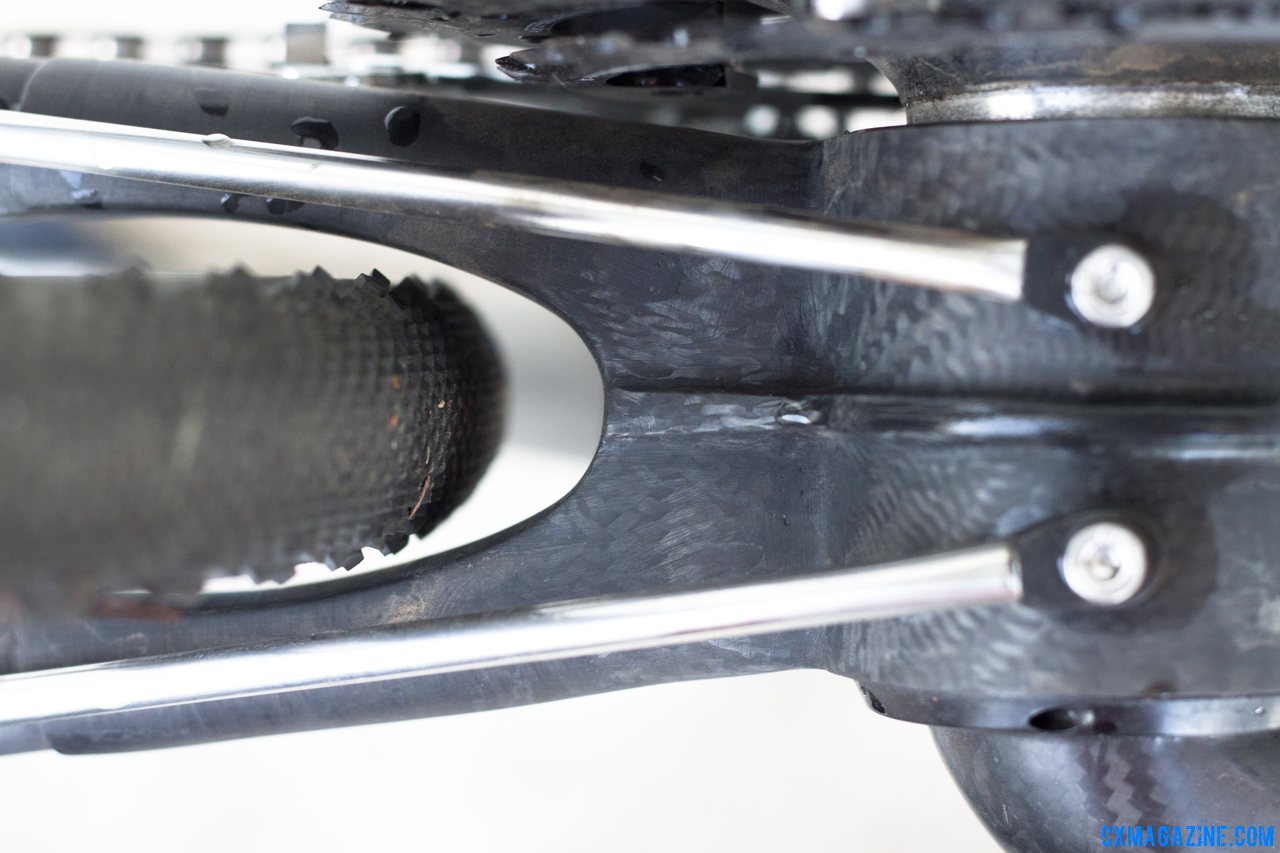
Spring stiffness and the stainless steel-wrapped carbon tubes control the travel. It’s not a mudder yet: the Manta CX Prototype has 3-4mm of clearance at most around the Clement 33c LAS tubular and a small shelf that may collect mud. © Cyclocross Magazine
Are we starting to see a trend of suspension finding a home on road and cyclocross bikes? With the Trek Boone being raced under Sven Nys and Katie Compton, and carbon fiber leaf spring seatposts from Ergon and Specialized becoming popular, is the cycling industry straying from the “stiffer is always better” mentality? It appears so, and we think for the average cyclocrosser who races or rides mixed terrain, that could be a good thing.
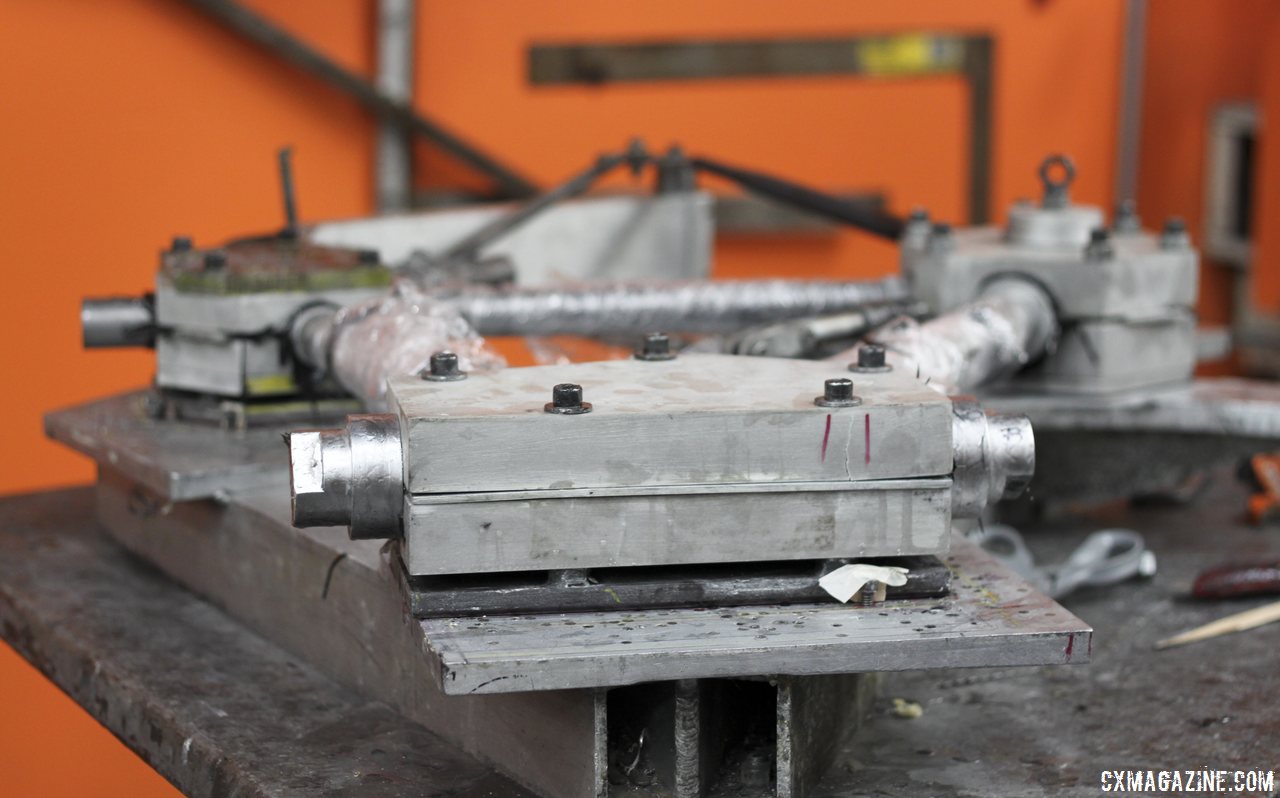
Made by hand in California: Lugs being molded for a Calfee Manta at Calfee headquarters. © Cyclocross Magazine
Calfee Design’s made-in-California carbon fiber frames are not cheap, and the Manta CX frame will retail for $4895, while the module (including the ENVE CX fork, Look ZED2 crankset and bottom bracket, Chris King headset and Praxis Works chainrings) will add $1100 more, selling for $5995. It’s also electronic shifting only, so SRAM fans may have to wait a few years if they want a Manta and still be loyal. Like most NAHBS show bikes, the Manta CX is a high-end dream machine out of reach of many. But will the production model ride like a dream? Stay tuned as we’ll be the first to test one when it’s ready.
See a full photo gallery of the Calfee Design Manta CX prototype bike that we’ve been testing, and a photo gallery of the complete build below that.
Calfee Design Manta CX Cyclocross Softail Frame Photo Gallery – NAHBS 2014:
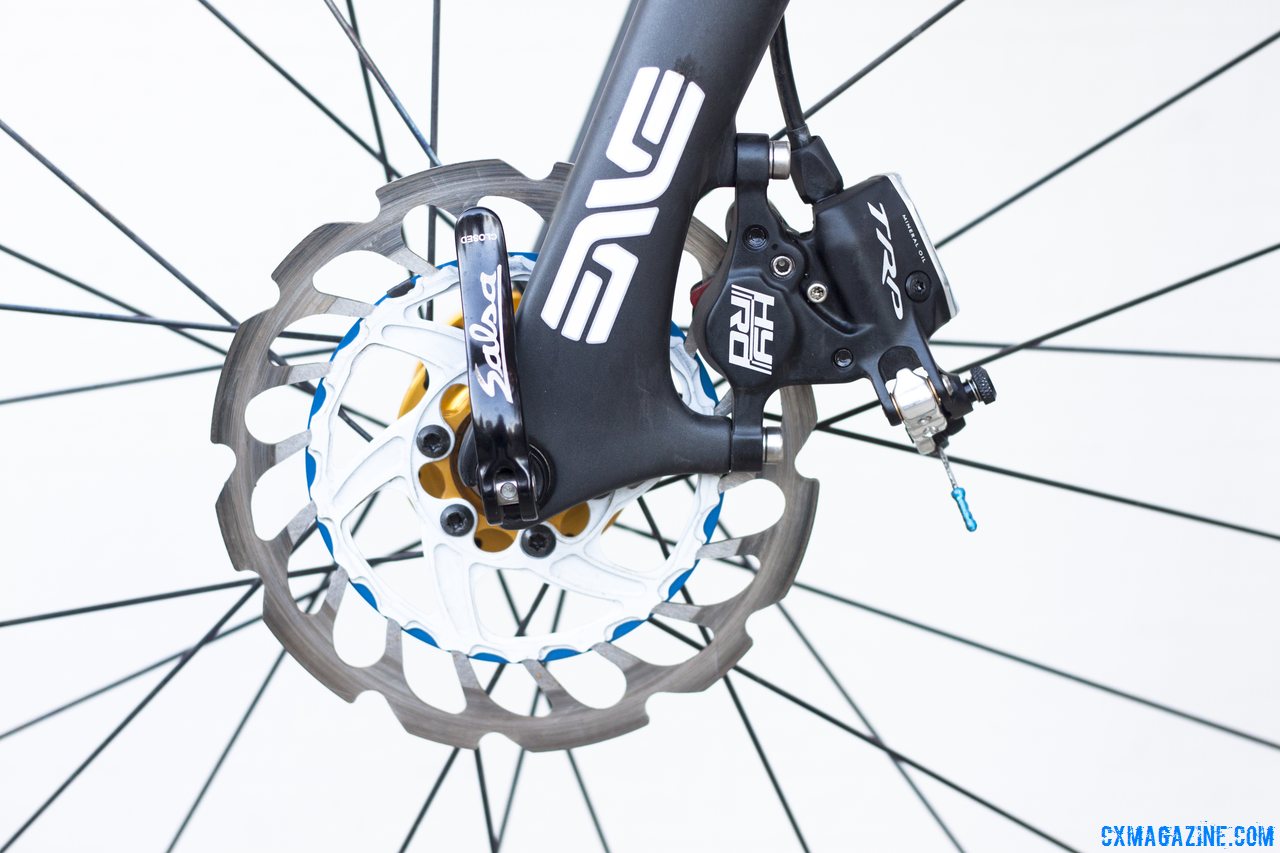
Calfee Manta CX Prototype with TRP HyRd hydraulic disc brakes and Scrub ultralight disc brake rotors. © Cyclocross Magazine
In true NAHBS fashion, Calfee spared no expense in putting together this bike, and outfitted it with plenty of ENVE components (cockpit, XC 29er tubular wheels, seat post), as well as the Manta default Look Zed2 crankset (320g!), PraxisWorks Levatime chainrings, Shimano Ultegra 6770 Di2, Scrub MMC rotors, Ergon SR-3 saddle and TRP HyRD hydraulic disc brakes. The complete bike, with plenty of high-zoot components, weighed under 18 pounds, and the frame alone is listed at 2.9 pounds. See details of the build in the photo gallery below:
Calfee Design Manta CX Bike Build Photo Gallery – NAHBS 2014:
Calfee plans to incorporate our feedback and work on a production model. We’re excited to see their modifications and test another version. Stay tuned to cxmagazine.com and our print magazine as we give a thorough test to some of these new bump-absorbing options, and check back soon for some more pre-NAHBS eye candy from Calfee Design and other builders.
More info: calfeedesign.com











